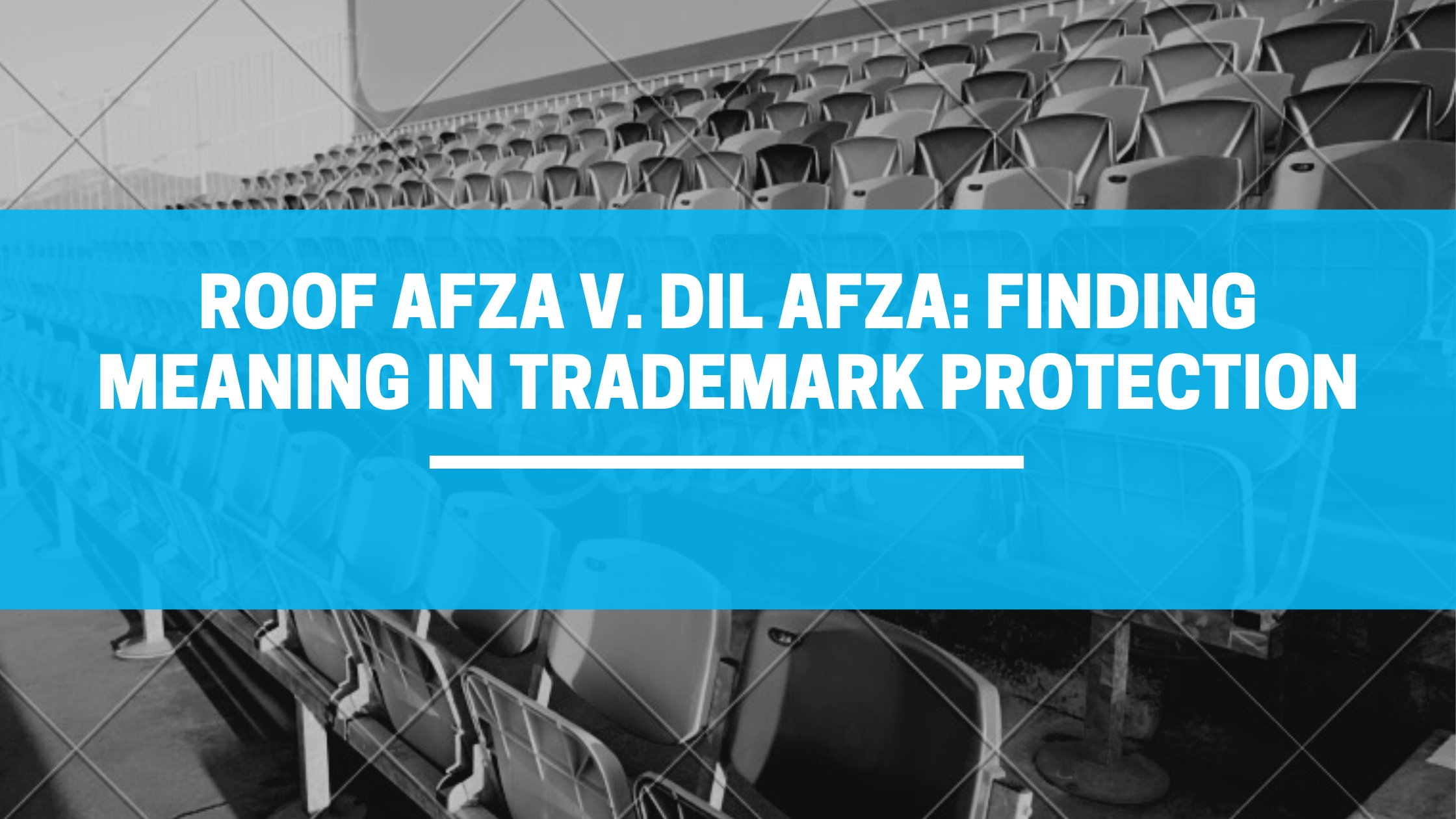ROOF AFZA V. DIL AFZA: FINDING MEANING IN TRADEMARK PROTECTION
In the matter of Hamdard National Foundation (India) v. Sadar Laboratories Pvt. Limited, the Delhi High Court refused to give the plaintiff an interim injunction in a trademark infringement dispute involving the plaintiff's mark 'Rooh Afza' and the defendant's mark 'Dil Afza.' While the case has been settled, it is an intriguing illustration of how claimants attempting to assert their rights frequently test the bounds of trademark protection.

INTRODUCTION
In the matter of Hamdard National Foundation (India) v. Sadar Laboratories Pvt. Limited, the Delhi High Court refused to give the plaintiff an interim injunction in a trademark infringement dispute involving the plaintiff's mark 'Rooh Afza' and the defendant's mark 'Dil Afza.' While the case has been settled, it is an intriguing illustration of how claimants attempting to assert their rights frequently test the bounds of trademark protection.
FACTS OF THE CASE
The case involved an allegation of trademark infringement, disparagement, dilution and tarnishment, injury to reputation, and tarnishment of brand equity filed by Hamdard National Foundation (Hamdard) against Sadar Laboratories, which was resolved by a single-judge court (Sadar Labs).
Hamdard, the maker of Rooh Afza, a well-known syrup/sharbat, claimed that Sadar Labs had infringed on its well-known trademark in 'Rooh Afza' and was passing off its products as the plaintiff's by using the mark 'Dil Afza,' with the phrases 'Rooh' and 'Dil' having similar meanings.
The complainant claimed that they have been using the mark for over a century and that they initially registered it in 1942. They stated that in March 2020, the defendant produced a syrup/sharbat called 'Dil Afza' with a mark, appearance, and design that looked very similar to the plaintiff's.
On the other hand, the defendant claimed that they had filed for registration of their trademark 'Dil Afza' in 2018, stating that it had been in use since 1949. The defendant maintained that Section 29 of the Trade Marks Act could not be enforced because both marks were registered. Second, the defendant claimed that the name 'Dil Afza' had been in use since 1949 and that they had established their own reputation.
The plaintiff did not have separate registrations for 'Rooh' and 'Afza,' thus the defendant could not claim a monopoly on the mark 'Afza,' and 'Afza' was not a distinctive word, according to the defendant.
The plaintiff responded by claiming that Sadar Labs had supplied no evidence that 'Dil Afza' has been in use since 1949, and that the registration itself was unlawful.
JUDGEMENT
Since both 'Rooh Afza' and 'Dil Afza' are registered trademarks, the exclusive right to use could not be enforced against each other, according to the ruling. The plaintiff's and defendant's marks are not identical, according to the ruling.
The court ruled that "there cannot be a confusion generated due to the meaning of the two words," dismissing the plaintiff's claim. The suit would have to be stayed under Section 124 of the Trade Marks Act since the plaintiffs had filed an application for rectification against the defendant with the Registrar of Trade Marks.
However, it dismissed the plaintiff's application under Section 124(5), finding that the terms 'Dil Afza' and 'Rooh Afza' were not identical and that the plaintiff could not prove their claim of exclusive use of the term 'Afza.'
ANALYSIS
The plaintiff sought an injunction, claiming that the phrases 'Dil' and 'Rooh' both indicate 'deep emotion,' and that the word 'Afza,' which means 'adding or increasing,' is common between them, causing customer confusion. Even if the suffixes are similar, the marks are sufficiently distinct to prevent consumer confusion.
Seeking an injunction because the words' meanings are similar, rather than the phrases themselves, appears to extend the scope of trademark protection beyond preventing resemblance and confusion.
A typical consumer is unlikely to be able to decipher the significance of a product's mark. The goal of trademark protection is to prevent a competitor from unfairly benefiting from a mark that identifies a company's products or services.
The protection does not, and rightly so, extend to the meaning of the mark. If such protection were to be expanded, it would be quite easy to monopoly marks in a specific field just by claiming semantic similarity.
Furthermore, trademark law is based on the assumption that any link a customer has with a particular firm's mark is solely based on the mark's word, sign, symbol, or graphic depiction, rather than its meaning or significance.
It's not commonplace for companies to attach prefixes or suffixes to common phrases to establish their own distinctive logo. However, in order to avoid trademark infringement, the new mark must be distinct from any existing marks that share the same prefix or suffix. The mark 'Dil Afza' is distinct from 'Rooh Afza,' and Hamdard's lack of a trademark claim for the term 'Afza' argues against any claim of similarity between the two.
Hamdard's appeal appears to be consistent with its prior trademark infringement complaints, in which they questioned the extent to which trademark law can protect its rights. Infringement does not happen simply because the suffix is the same.
Hamdard has already filed a case against Karan Johar, accusing him of making derogatory references to 'Rooh Afza' in one of his films. Similarly to the last litigation, Hamdard's strategy now looks to be more in line with an attempt to terrify a competitor by claiming trademark infringement than with enforcing the protection given for their mark.
written by:
Kajal












